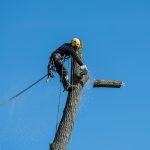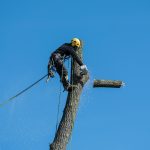Fixed rooflights transform interiors by flooding spaces with natural light, enhancing ambience without the challenges of ventilation. Ideal for flat or pitched roofs, they brighten darker rooms and can reduce heating costs through solar gain. Customisable in style and size, these fixed rooflights offer a durable, low-maintenance solution that blends aesthetic appeal with energy efficiency, suited for both homes and commercial buildings.
Fixed rooflights: Maximising daylight with non-opening skylights for homes and businesses
After the heading, Fixed Rooflights for Maximum Light stand out as sealed, non-opening skylights that channel abundant sunlight into both residential and commercial interiors. These rooflights come in diverse configurations suitable for flat and pitched roofs, with options such as fixed flat rooflights, triple glazed fixed skylights, and framed or frameless glass models. Choices span high-performance double or triple glazing, UV and solar control coatings, and varied frame materials, including durable aluminium in contemporary colours to blend seamlessly with any architectural style. For more details about product varieties, features, and technical data, you can refer to this page: Fixed Rooflights for Maximum Light.
Have you seen this : Solar panel installation in bristol: a guide to sustainable energy
Key advantages include increasing daylight, which reduces reliance on artificial lighting—ultimately lowering energy bills and raising comfort. Enhanced insulation, especially in triple glazed or flushglaze fixed rooflights, boosts energy efficiency and minimises heat loss. These units create an aesthetically pleasing, sleek finish on the roof and are available in sizes from compact to expansive, ensuring a tailored fit for every project. Common applications span kitchens, offices, workshops, or extensions where bright, inviting spaces are desired—without the need for ventilation.
Comparing fixed rooflights: Types, customisation, and installation essentials
Range of fixed rooflights
Precision: Fixed rooflights are non-opening glazed units installed flush or nearly flush with flat or pitched roof surfaces, with variants such as frameless flat glass, dome, walk-on, flushglaze, and circular skylights. Each style admits maximum natural light while remaining sealed against the elements. Walk-on fixed rooflights are engineered for enhanced impact resistance, making them ideal for terraces or internal floors. Triple-glazed and bespoke solutions adapt to more demanding thermal or acoustic needs, and modular designs allow creative combinations for larger spaces or unique architectural layouts.
This might interest you : Revitalize your space with carpet cleaning in fitzrovia
Material and glazing choices
Recall: Glass is the preferred material for clarity and durability, with options for double or triple glazing to boost energy efficiency and reduce heat loss. Polycarbonate domes offer impact resistance at a lower cost, with multiple skin layers for added insulation. Frames are most commonly aluminium, combining strength, corrosion resistance, and availability in many colours and finishes. All units generally require an upstand—either integrated or separate—to maintain a weather-tight fit.
Installation process and support
Step-by-step installation guides ensure users can confidently fit rooflights to timber kerbs or compatible upstands. Standard products are designed for easy fitting, but bespoke units may need specialist input. Nationwide delivery and online support simplify access for both home improvers and commercial installers.
Practical guidance: Costs, regulations, maintenance, and real-world considerations
Pricing breakdown, cost-saving options, and what affects fixed rooflight installation cost
Fixed rooflight prices range from a few hundred pounds for economy models to significantly more for custom or high-spec versions. Key factors affecting installation cost include the size and type of rooflight, chosen glazing (double, triple, or quad), frame material (aluminium, polycarbonate, glass), and requirements like kerbs or upstands. Bespoke features, acoustic glazing, and energy-efficient coatings often add to total pricing. Don’t forget to budget for essential extras such as flashing kits, which ensure weatherproof sealing but are typically sold separately.
Installation is usually straightforward, with manufacturers supplying clear fitting guides. You can save on labour by choosing models designed for DIY installation, though professional fitting helps ensure compliance and longevity, especially in complex settings.
Regulations: building control, permitted development, conservation area requirements, warranty and compliance issues
Most fixed rooflights fall under permitted development rights, sparing you the complexity of full planning permission. Always check with local planning authorities if you live in a conservation area or listed property—rules may be stricter. To meet UK building regulations, options with low U-values and robust weatherproofing are advisable. Leading brands provide certificates of compliance, and warranties usually cover up to two years as standard for added peace of mind.
Maintenance, cleaning, lifespan, condensation prevention, customer feedback, and evaluating long-term benefits
Fixed rooflights typically require minimal maintenance. Self-cleaning glazing reduces dirt buildup, and frames are designed to withstand UK weather. Regular checks of seals and drainage channels help prevent leaks and condensation. Energy-efficient models offer notable long-term savings on utility bills and are engineered to last decades—making them a wise investment for year-round comfort and natural light.













